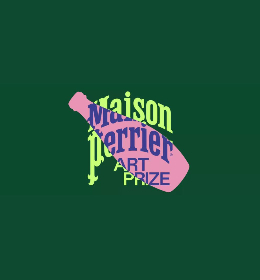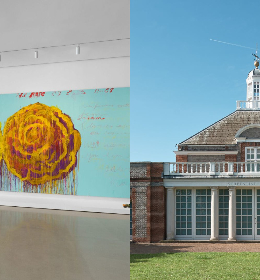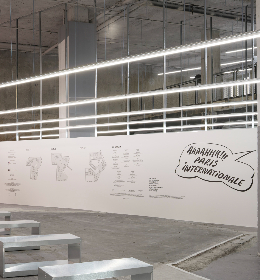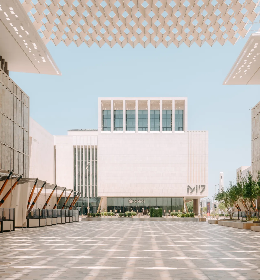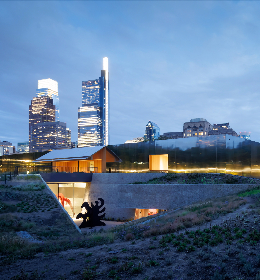The center has a rich programming including urban walks, support for urban gardens, open house visits of behind the scenes in historic dilapidated buildings, as well as support for urban refurbishments, environmental protection, real estate development, and a coworking space.
Szemerey extrapolates on the scope of the center and the significance of the exhibition Shadows of the City, “Our role traditionally has been to present or create such reflections and help various communities better understand architecture and the urban environment. This exhibition provides viewers with reflections on this environment and its current elements, which expand from the built to the digital and the hybrids their interactions create. We hope viewers will find fresh perspectives for rediscovering and reflecting on their urban environments, and new ways to engage with architecture.”

[Photographer: Balázs Csizik, City's Shadow Exhibition - Hungarian Contemporary Architecture Centre; Artwork and artist: Memories - Zsolt Asztalos]
The works displayed combine well-established artists and emerging visionaries. I spoke with Zsolt Asztalos, who represented Hungary in the 55th Venice Biennale, whose work focuses on memory and its architecture in an esoteric vision, “My new series is entitled Recording Memories. This is a kind of visual diary. Memory Mapping is an expression in the science of memory research. It means that people systematize their pieces of memories using abstract visual elements. We put a certain memory’s elements into different boxes and put them in a row or up and down, under or above. My abstract series represents real human stories. These are a kind of monuments.”
Asztalos has been focusing on memory in his work for many years, but more recently he has developed these elements of architecture, of building parts to create a whole. These works by Asztalos, represent an internal intimacy, a built system of memory construction, “These abstract installations are inner cities in my soul or in my mind. I took photographs of them so that the outcome should be a still life of monuments. We can see shadows, lights, and clear shapes in a neutral inner space.”
Considering the goals of the center, this exhibition brings a new twist to the perception of our built environments, digging deeper towards our constructed identities. “In short, the underlying intention, the common drive is to build inner cities,” says Géza Kulcsár, who developed the main concept with the curator Emö Böjthe. This concept seems to hold the works together in an urban environment of soul filled spaces. The crowded nature of the exhibition begins to explain itself in this way, as the overlapping and stifling spaces of internal thoughts, interrupted by one another. I begin to reflect on the works of artists in the canon of art history, such as the contemporary American artist Charles Simonds, whose work presents bodies, the earth, and architecture as dwellings (as summarized from John Beardsley’s commentary on his work). But here, the place of internal dwelling loses form of singularity and embraces the multiplicity of the urban environment, the overcrowded mind space of the information age. Kulcsár extrapolates, “Cities are much more than our environment, our place of living - they are as much within us as we are within them. Some of us rely on the effects of storytelling, some on colors, others on concepts - still, in every case, there is a shadow city in our minds and souls, as real as Budapest, even if maybe more labyrinthine and fragmented.”
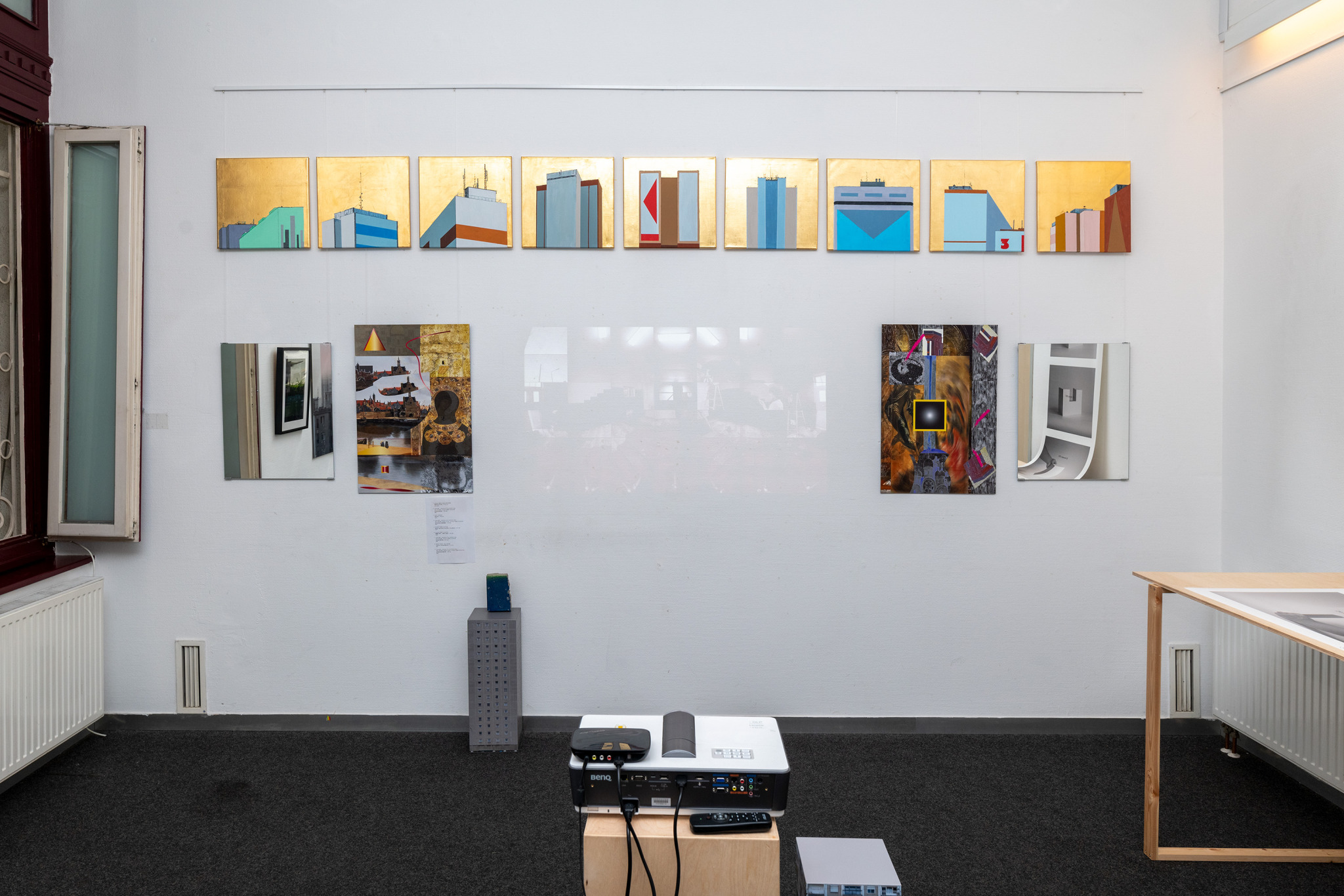
[Photographer: Balázs Csizik, City's Shadow Exhibition - Hungarian Contemporary Architecture Centre; Artists and artworks (up to down): Kristóf Szabó KristofLAB - Cell-icone, Géza Kulcsár - Fragmentation; Gusztáv Hámos & Katja Pratschke (video/media artists) - Sampling Cities; Balázs Csizik - Experimental microdistricts ]
A central element of the curation of the exhibit is the platform Urbanum. Still in its formation, Urbanum seems to be taking on some grand conceptual exhibitions and movements and opening up to community through historic and theoretical visions of the city from as far back as the ancient agora. Kulcsár explains, “Urbanum is essentially a channel, through which basically every kind of thought, impulse or image around the city (the city in general, or any city in particular) can freely flow. Or maybe even more an agora, a town square, where anyone can come and leave whenever they want, and where there is always space for interaction.”
Presented are also projections of short video clips of the city, moments of interaction between the public and ancient ruins in Asztalos’s works along with other interventions in filmic episodes. On the back wall there the work of Kristóf Szabó KristofLab as a series of painted geometries, color schematics with the suggestion of icons incorporating gold, perhaps as a series of sequenced votives, elegies to the forms and shapes of the shadows in our built cities. Katja Pratschke, Gusztáv Hámos, and Géza Kulcsár have works included, which invite different perceptions, constructions, and investigations into the collage of the city, its movement, and relativity. An exhibition at the heart of Budapest, Shadow of the City, becomes an alter ego of the city and its dwellers.
KÉK - Contemporary Architecture Center
image of the top: [Photographer: Emőke Böjthe; Exhibition: City's Shadow - Hungarian Contemporary Architecture Centre; Artists: Kristóf Szabó KristofLAB, Géza Kulcsár, Asztalos Zsolt, Gusztáv Hámos, Katja Pratschke, Balázs Csizik; Curator: Emőke Böjthe]





